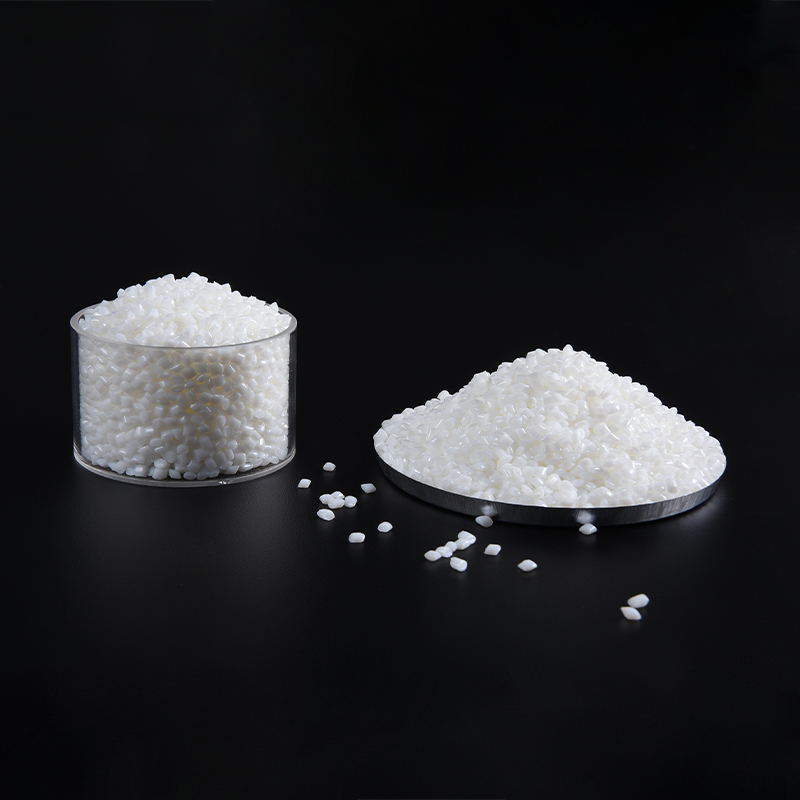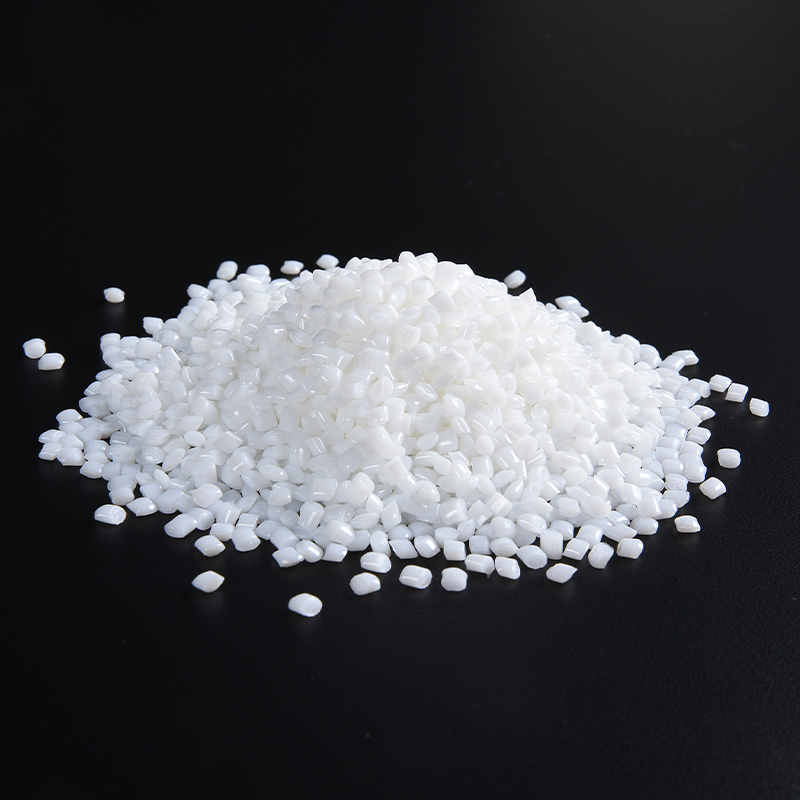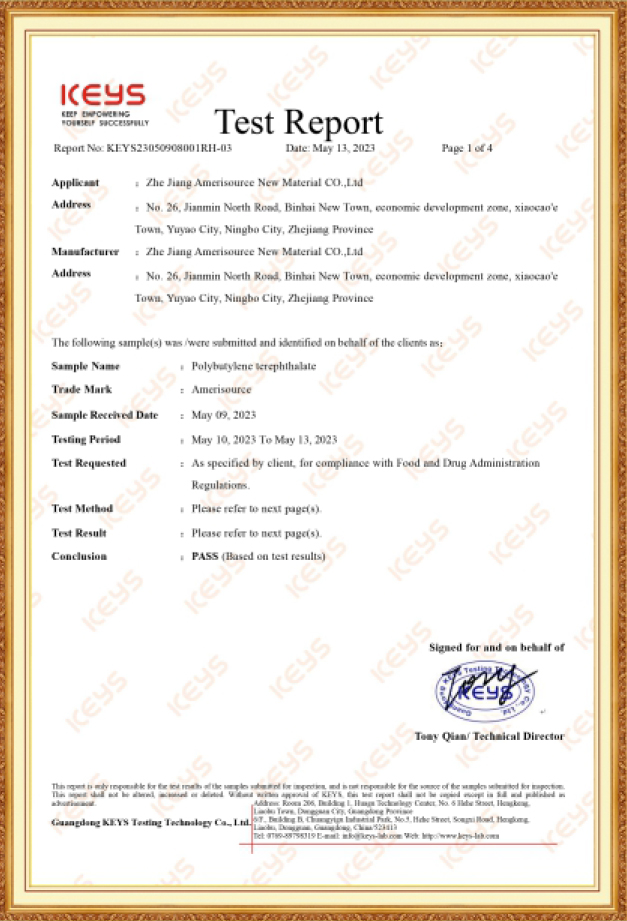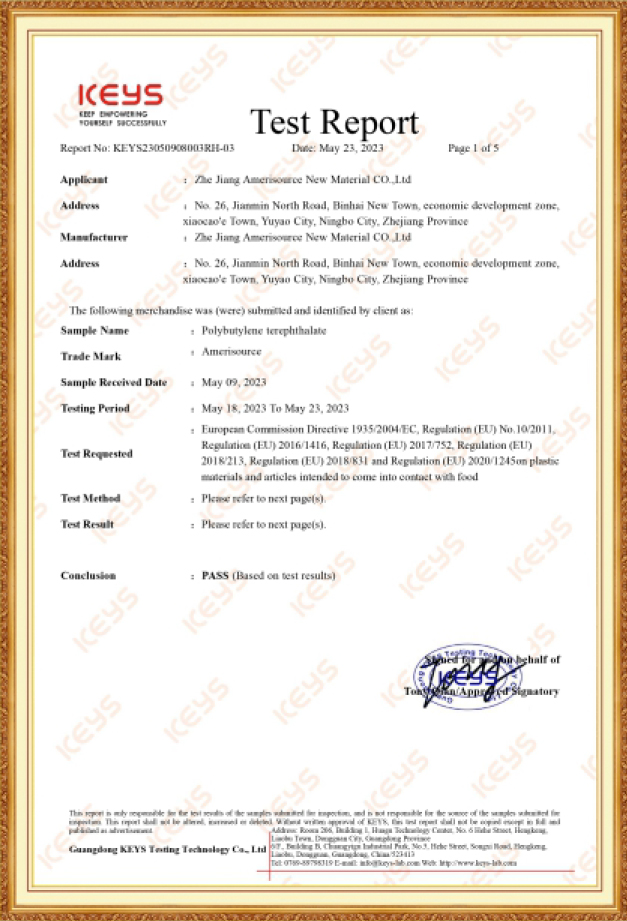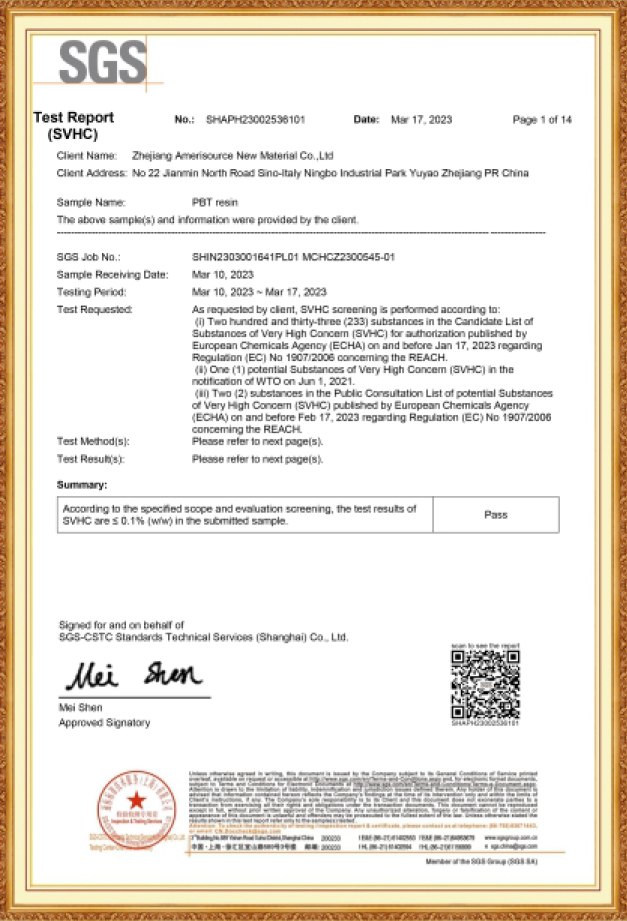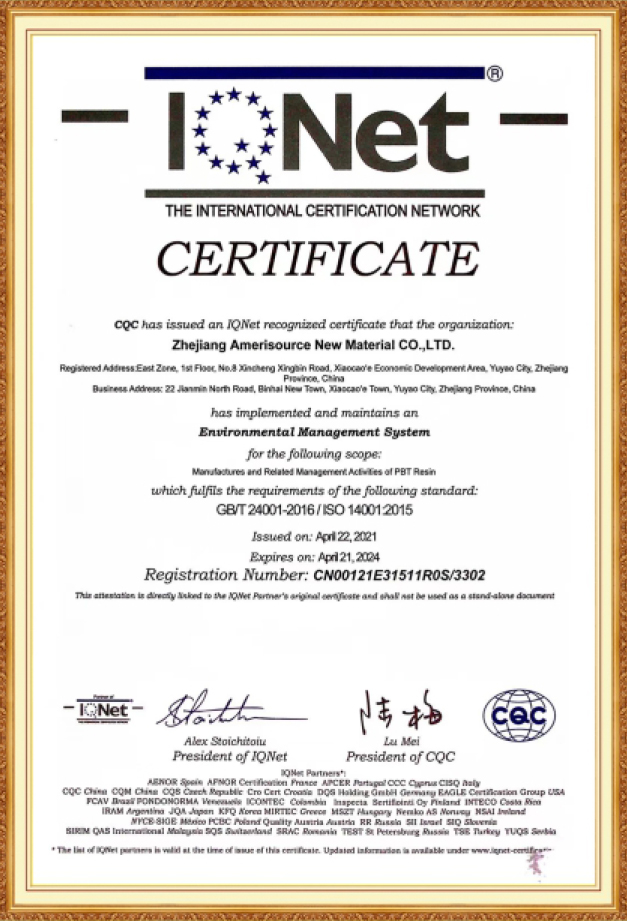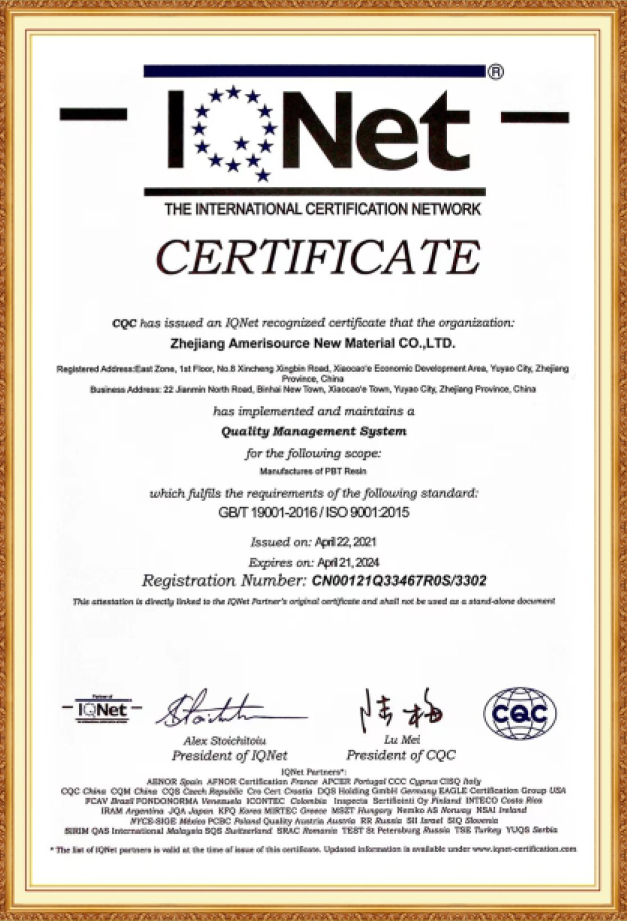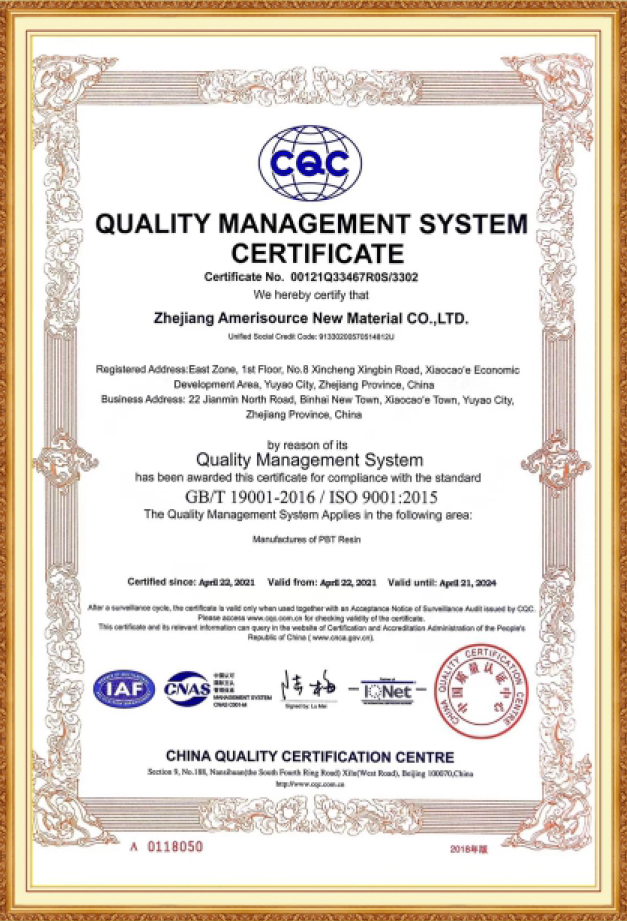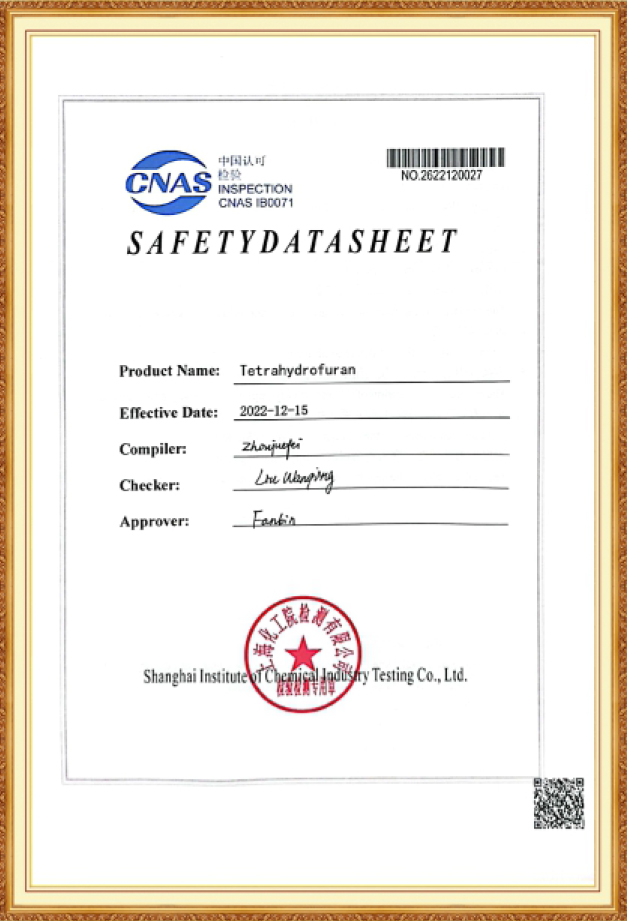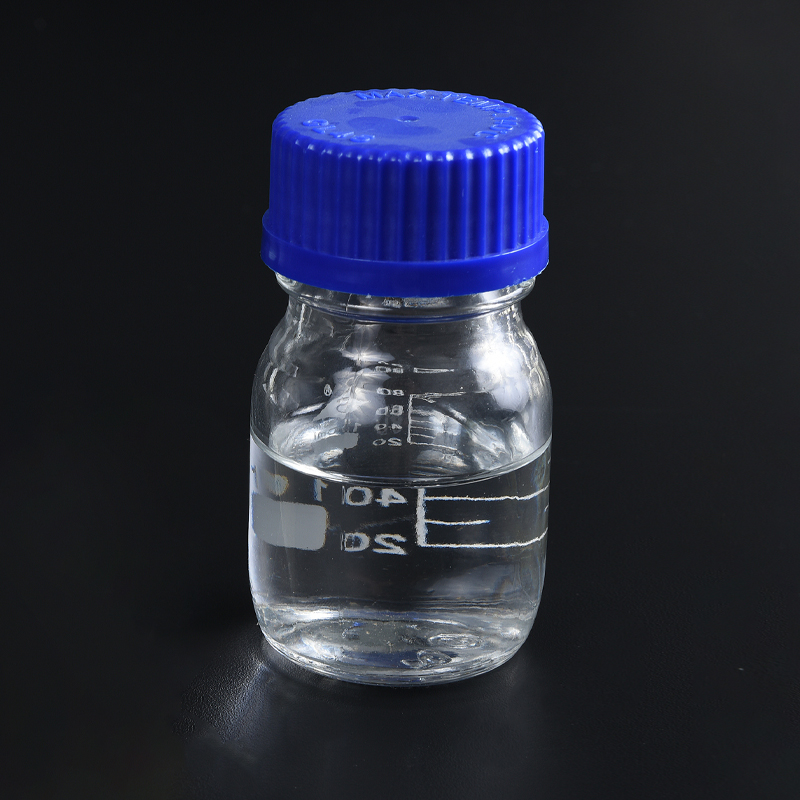The MY10 series is a
polybutylene terephthalate (PBT) material for spinning with a specific set of physical and chemical properties. Its intrinsic viscosity is 1.000±0.015 dl/g, and its melt flow index is in the range of 23-32 G/10 min. In addition, its carboxyl end group content is 16±4 Mol/t, showing good tensile strength and elongation. Its tensile strength is 55±5 MPa, and its elongation at break reaches or exceeds 200%. In addition, its notched impact strength (lzod) is ≥40 J/m.
MY10 series PBT materials show excellent performance and stability during spinning. Its inherent viscosity ensures good morphological and dimensional stability of the fiber, while its melt flowability makes it suitable for high-speed spinning processes. The carboxyl end group content facilitates fiber processing and subsequent processing, enhancing the fiber's adhesion and durability. The excellent combination of tensile strength and elongation at break makes it suitable for a variety of textile applications, including fabrics, fibers and textiles. At the same time, its high notched impact strength ensures good durability and impact resistance of the fiber during use.
What are the primary parameters to consider when optimizing the spinning process using MY10 Series PBT?
When optimizing the spinning process using MY10 Series PBT (Polybutylene Terephthalate), several key parameters play crucial roles in achieving desired outcomes in terms of yarn quality, production efficiency, and cost-effectiveness. Here are the primary parameters to consider:
1. Polymer Characteristics: Understanding the intrinsic properties of MY10 Series PBT is fundamental. Parameters such as molecular weight distribution, viscosity, and melt flow index influence the processability and final yarn properties. Fine-tuning these characteristics can enhance spinning performance and yarn quality.
2. Temperature Control: Temperature management throughout the spinning process is critical for PBT, as it directly impacts polymer flow behavior, melt stability, and yarn properties. Optimizing temperatures in the extrusion, spinning, and drawing zones ensures adequate polymer melt consistency and yarn strength.
3. Spinning Speed: Adjusting spinning speeds optimally balances production rate and yarn quality. Higher spinning speeds may increase productivity but could compromise yarn evenness and integrity. Finding the optimal speed for MY10 Series PBT involves considering its melt stability and crystallization kinetics.
4. Spinneret Design: The design of the spinneret, including capillary geometry and arrangement, significantly affects filament formation, diameter uniformity, and fiber properties. Fine-tuning spinneret parameters such as capillary diameter, land length, and distribution pattern optimizes filament formation and reduces defects.
5. Drawing Conditions: Drawing or stretching the extruded filaments imparts strength, orientation, and dimensional stability to the yarn. Optimizing draw ratios, draw speeds, and draw zone temperatures ensures uniform molecular orientation and enhances yarn tenacity and modulus without sacrificing elongation.
6. Airflow and Quenching: Proper quenching of extruded filaments using controlled airflow is essential for rapid cooling and solidification, preventing filament distortion and maintaining yarn uniformity. Adjusting air velocity, temperature, and distribution across the filament bundle optimizes quenching efficiency and yarn quality.
7. Take-up Tension: Managing take-up tension during filament winding onto the package influences yarn package density, bulkiness, and residual stress distribution. Optimal tension control prevents yarn breakage, snarling, or ballooning and ensures consistent package build.


 简体中文
简体中文